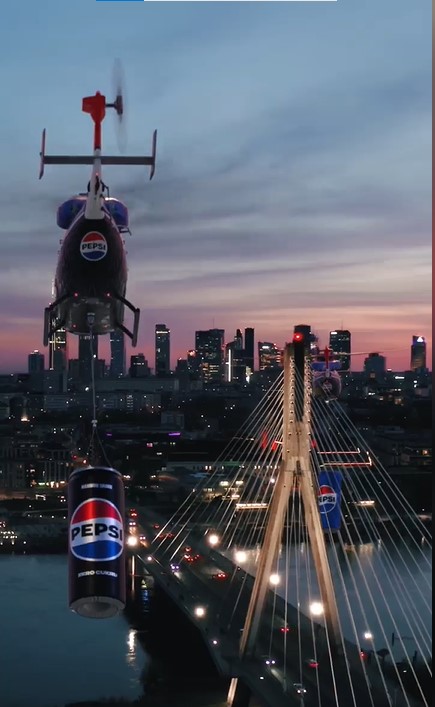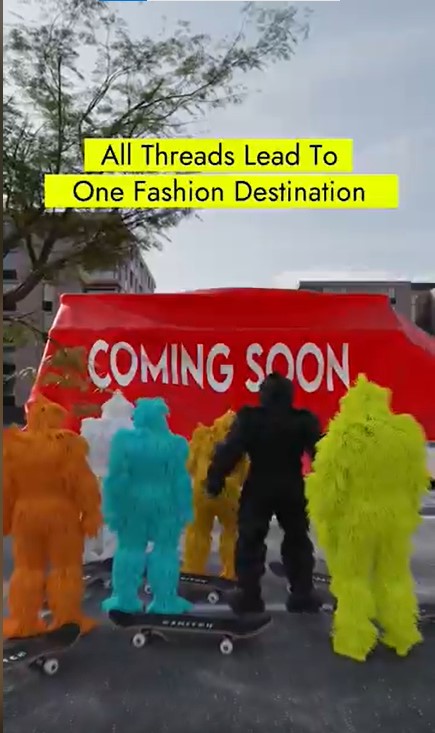Effectiveness, engagement and novelty are some of the many benefits of computer-generated imagery (CGI) — driven advertising
New Delhi: The iconic Qutub Minar getting a golden ring, a box falling on a building, an anonymous creature on a skateboard or a company logo towed by a helicopter are some visuals brands use to dazzle customers as part of their digital advertising campaigns.
Such computer-generated imagery (CGI) is gaining popularity in advertising, especially on social media platforms like LinkedIn.
CGI advertisements help blur the lines between imagination and reality using technology.
Loreal, Myntra, Pepsi, Ponds, MyG, Snitch and many others have used CGI marketing due to its many benefits. For instance, it enables the creation of highly polished and visually captivating advertisements. Other noticeable benefits include cost-effectiveness in the long run, consistency in product appearance across different marketing channels and campaigns, and bolstering brand identity.


“As we recognise the growing importance and effectiveness of CGI in engaging our audience, we are actively looking to expand our investment in this innovative marketing approach,” said Chetan Siyal, chief marketing officer (CMO) at Snitch. This Bengaluru-based fashion brand has recently opened six stores and has aggressively utilised the technology for its marketing and promotion.
Cost and time factors
On average, producing a top-notch CGI video may range from several thousand to lakhs of rupees, depending on factors like animation complexity, duration, detail level, and CGI artist’s expertise.
Siyal from Snitch shared that the company allocates approximately 5% of its marketing efforts towards CGI content.
“Companies invest varying amounts in CGI marketing technologies depending on their size, industry, and specific marketing goals,” said Agam Chaudhary, founder and chief executive officer (CEO), Two99, a Noida-based advertising services company that offers services in this area.
“What we have seen is that fintech brands allocate somewhere around Rs 3 lakh, whereas fast-moving consumer goods (FMCG) spends between Rs 5-6 lakh to create high-quality visuals and immersive experiences, encompassing expenses such as software licences, hiring CGI artists, and production costs,” added Chaudhary.
While brands like Snitch have their dedicated team for CGI-based ads and marketing, other brands outsource their projects which also impacts the cost of a CGI campaign.
As for time, making a campaign can take from a few hours to several weeks from concept to completion. This period covers scriptwriting, storyboard development, asset creation, animation, rendering, and post-production editing, video editing professionals who work in software like Adobe Aftereffects told IndiaRetailing.
“Usually it’s done within half a day and sometimes even more depending on the resources and confirmation from the clients,” said a professional. This is generally done through a process called rigging which adds movement to objects.
ROI and ROAS
The return on investment (ROI) of CGI marketing technologies varies greatly across brands. “Our CGI content has been yielding healthy returns, with a ROAS (return on ad spend) ranging between 6-9%,” added Siyal.
It also depends on the region and the country of operation said experts.
“Our U.S.-based FMCG brands have seen remarkable returns, averaging around 2x,” shared Chaudhary of Two99. He added that the brands use CGI-driven campaigns for heightened brand visibility, engagement, and sales. And although customers have responded positively to the visually captivating and interactive content, accurately measuring ROI remains challenging as it requires tracking of metrics like website traffic, conversion rates, and evolving customer sentiment.
For companies like Two99, CGI contributes approximately 10-12% of its total agency revenue.
Going forward
The adoption rate of CGI in marketing varies widely across industries and is influenced by factors such as cost, technical expertise, and creative vision. While CGI offers unparalleled opportunities for creativity and engagement, the initial investment in technology and talent can be significant.
However, as CGI technology becomes more accessible and its value in creating engaging content becomes more widely recognized, experts expect to see an increase in its use among brands looking to differentiate themselves and captivate their audiences in new and exciting ways.
“We anticipate a surge in CGI adoption across various industries, driven by the growing demand for visually compelling content in digital marketing strategies. Brands will increasingly prioritise CGI-driven campaigns to differentiate themselves, engage audiences, and stay ahead of the competition,” concluded Chaudhary.


